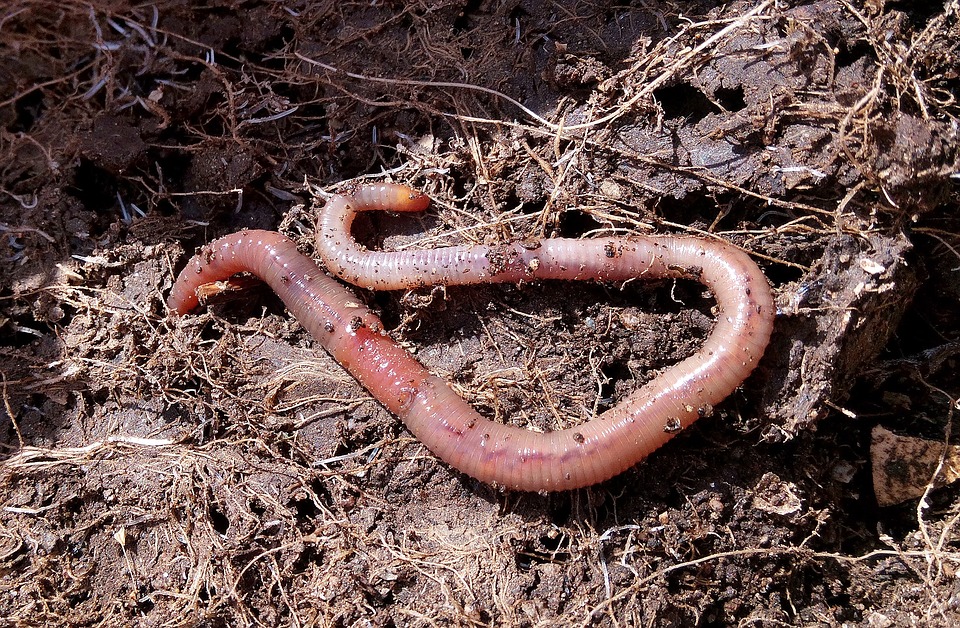
Students will:
- Identify basic worm anatomy.
- Safely handle and observe worms.
- Compare worm anatomy with human and/or animal anatomy.
- Wet and dry paper towels
- Butcher paper or newspaper if working inside
- Microscopes and/or magnifying lens
- Worm Anatomy Drawing – PDF
- Soil Samples
- Garden Journals
Activity Preparation
- Set up work workstations for small groups with the materials below. Consider making a worm bin for each classroom with students for them to observe throughout the year.
Identifying Worm Anatomy
- Remind students that organic material is “living” material (aerobic). That includes dead plants and many kinds of creatures, such as bugs and worms.
- Show students the worm anatomy drawing. Explain that worms help the soil in two ways:
- They mix the soil by making holes and tunnels in it.
- Their castings (worm poop) enable decomposition.
- Worms and other creatures, such as beetles and spiders, are called invertebrates, because they do not have a backbone. Prompt students to feel their own backbones for reference.
- Ask: What is an example of other invertebrates we can find in the soil?
- Share more facts about worm anatomy:
- Worms have a mouth at one end and an anus at the other end.
- In between they have segments (setae).
- Worms move by retracting and expanding their muscles.
- Worms have 150 segments (setae).
- Unlike other invertebrates, worms don’t have any eyes, teeth, pincers, or stingers.
Worm Observation
- Demonstrate how to gently handle worms by placing several of them on the back of your hand.
- Demonstrate how to observe the worms with microscopes
- Students draw and label the parts of a worm’s anatomy in their Garden Journals.
- Ask: Why are worms important for the garden?
- Direct students to think about all the things they know about worms.
- Prompt them to now think about all the things they would like to know about worms.
- Write down their worm questions on post-its and collectively answer these during the closing circle.
Student Reflection
- Some students need additional demonstration on how to safely handle worms. Emphasize that worms will not hurt you.
- Worms have segments, but they do not have backbones.
- Worms have mouths and anuses, but they do not have eyes and or teeth.
- Worms have segments, but they do not have legs.
- Worms have __________, but they do not have ____________
- Humans have backbones, but invertebrates do not.
Reading list: "Diary of a Worm," by Doreen Cronin
Academic Standards
Disciplinary Core Ideas
Structure and Function: All organisms have external parts. Plants have different parts (roots, stems, leaves, flowers, fruits) that help them survive and grow. Different animals use their body parts in different ways to see, hear, grasp objects, protect themselves, move from place to place, and seek, find, and take in food, water and air.
Information Processing: Animals have body parts that capture and convey different kinds of information needed for growth and survival. Animals respond to these inputs with behaviors that help them survive. Plants also respond to some external inputs.
Variation of Traits: Individuals of the same kind of plant or animal are recognizable as similar but can also vary in many ways.
This lesson is part of the Berkeley Unified School District's Gardening and Cooking Program curriculum.




